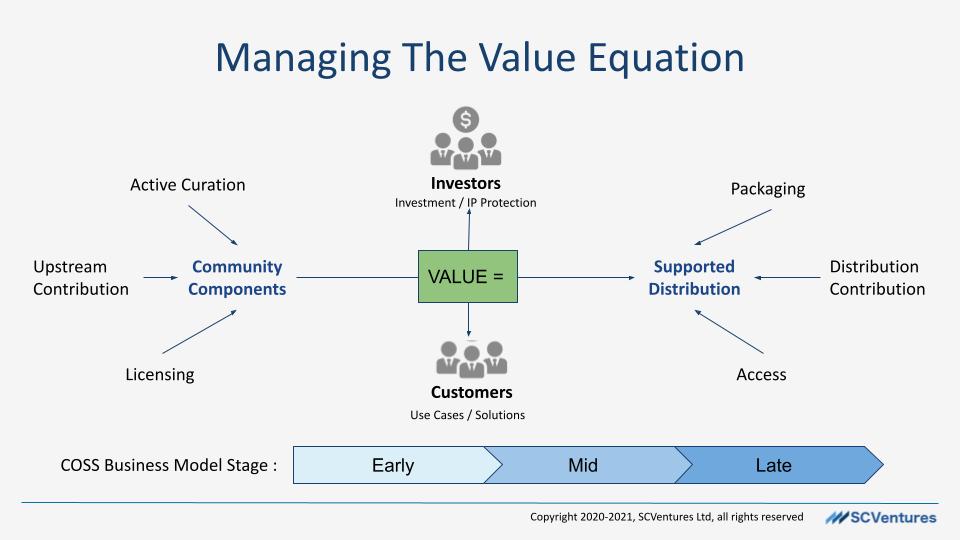Open source has undoubtedly revolutionized the software industry, with many businesses leveraging its power to create value for customers and investors. However, it is essential to recognize that open-source business models are not static and need to evolve as your project and business matures.

Re-evaluating your open-source commercial strategy is crucial to manage competitive differentiation while maximizing community contribution and growth.
While much of the attention in open source businesses is on traditional scaling of the community, adoption, and conversion, the commercialization model is equally important. The approach that worked in the early stages of your business may no longer be valid as you scale. It is essential to understand when and how to manage the value equation for customer and investor value and choose the appropriate commercialization model at each stage of growth.
The value equation for open source is critical to managing your business’s growth and success. It is based on managing community components such as upstream contribution, active curation of projects and subprojects, strategic commercial open source licensing, and distribution strategy.

Upstream contribution refers to the contributions made by your company to the upstream open-source projects that you depend on. This can help ensure that your business is aligned with the overall direction of the project, and it also helps to build relationships with the upstream community. Active curation of projects and subprojects involves managing the development of the software, ensuring that it is stable and secure, and addressing any issues that arise.
Strategic commercial open source licensing involves choosing the appropriate licensing model for your software, whether it be open core, fully open source, SaaS, or a hybrid model. This decision should be based on your business model and stage of maturity, whether it be early, mid, or late-stage growth. Choosing the right licensing model can help you maximize revenue and manage costs while also ensuring that you are creating value for your customers and investors.
Distribution strategy is another critical component of the value equation for open source. This involves deciding how you will distribute your software, whether it be through public or private distribution channels, and how you will price and package it. The distribution strategy should be aligned with your business model and stage of maturity to ensure that you are reaching the right customers and maximizing revenue.
To manage the value equation for open source successfully, it is important to align it with your business model and stage of maturity. For example, in the early stages of growth, it may be more important to focus on building a community and establishing your brand. This may involve investing in upstream contribution and active curation of projects and subprojects to build relationships with the open-source community. In mid-stage growth, the focus may shift to building a strong partner network and expanding your reach. In this stage, strategic commercial open source licensing and distribution strategy may become more critical.
Join me for this session where I’ll cover one part of open source businesses strategy that is so often overlooked and often why commercial open source businesses often hit a growth wall. Successful open source businesses understand when and how to manage the equation for customer and investor value as well as which commercialization model to choose at each stage of growth. I’ll provide the top 5 KPIs and strategies to adopt and share real-world examples, from direct experience at companies such as Red Hat, VMware/Nicera, Hortonworks, and others to help you chart your strategy.